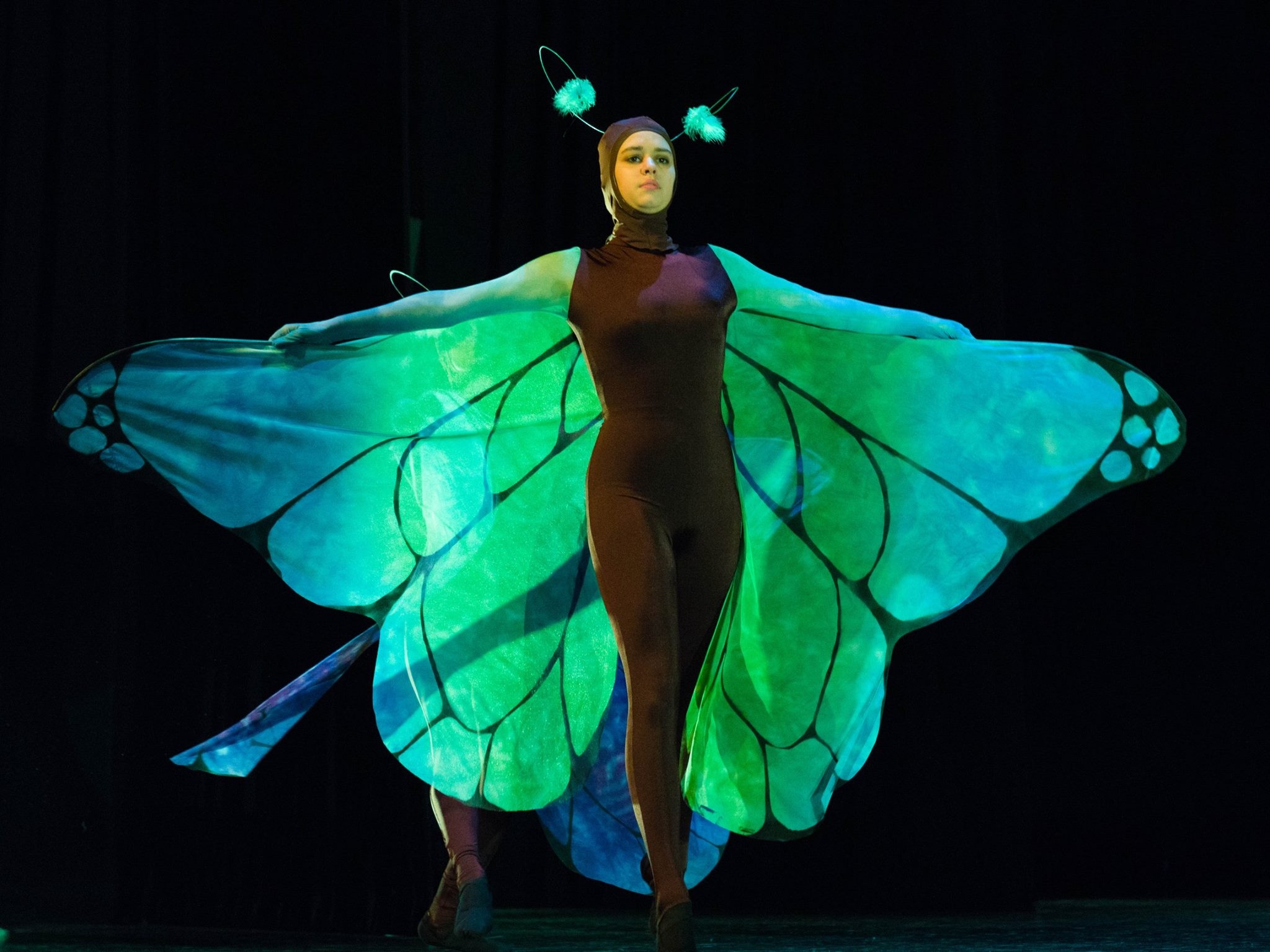The Grand Rapids Ballet School Junior Company members, all students between the ages of 10 and 19, have an opportunity to perform limited roles throughout the year in the Grand Rapids Ballet professional shows; however, once a year they present their own performance. It is, in essence, a very sophisticated and demanding recital for developing dancers to push themselves as performers, perhaps before they’re fully fledged artists in their own right.
This year they’ve presented Mini-Tales & Bolero, a 75-minute colorful mixed bill including three abbreviated storybook ballets and a demanding variation of Bolero, French composer Maurice Ravel’s famous one-movement orchestral composition originally commissioned as a ballet that premiered in 1928. All of the dances were choreographed for the students by Director Attila Mosolygo, clearly to showcase their very strong technique at their various levels of development and mastery of the art form.
And the costumes, sets and lighting design, that, among other things, effectively transform pre-adolescents into creatures of the sea and sky, delightfully contribute to the feel of a professional production.
The show opens with Thumbelina, a lively 30-minute piece with many sets and quick transitions between them, from waking to dreaming, the ocean to the forest, and an opening flower as well as an expansive night sky. A cast of 23 well-trained children dance as fish, birds, butterflies and fairies, among other strange and wonderful woodland creatures. It’s a very full stage, and they all come to life vividly with inventive costumes and perhaps less inventive choreography designed to show off their varied abilities.
Kiana Clay’s Toad is a gorgeous jumper and Serafina Wagenveld as Thumbelina shines in her lyrical solo. The romance and pas de deux between Wagenveld and Cosmo Gamaggio as the prince is odd, largely because they’re children, and such a pas de deux is meant to express a love and depth of emotion they simply haven't yet experienced.
However, Gamaggio is a wonderful Jack in Jack and the Beanstalkl largely because of his enormous acting ability in a role he can fully access with his imagination. Benjamin Waldvogel is huge as the Giant because of his expressiveness and largesse in movement, and Patrick Lennon, too, is a captivating Old Man.
The sweet Goldilocks and the Three Bears presents clear motif tied to character. In fact, the dancers do such a lovely job embodying their roles through movement and the story is so well-known, the choice to include a voice-over narration seemed unnecessary and distracting. But perhaps it makes the show more accessible to the very youngest members of the audience. Madeline Muth struggled at times with her timing, but captured Goldilocks’ naivete and curiosity through both movement and facial expression beautifully.
Overall, this company’s extensions are exquisite, their pointe work clean, their attitudes straight out of a textbook, and their stag leaps and grand jetes glorious. This mastery of technique is most evident in Bolero, danced by 17 of the older, more practiced dancers, though it is also present throughout the other three pieces.
Mosolygo suggested in his curtain speech that the dance embodies “what would happen if two opposing forces tried to occupy the same space at the same time.” What’s implied but not expressed is a depth of sultry yearning and sensuality, a shortcoming of the young dancers’ reach as artists in this ambitious piece.
Eight women dressed in pointe shoes, black dresses lined with red fringe, and a red rose at the left hip and one in the hair, and eight women in character shoes and red ruffled Spanish-styled dresses, dance first in trios and then altogether.
Stomping and clapping punctuate the movements, and one man, Benjamin Waldvogel, partners with three of the dancers in pointe shoes, wowing the audience with a one-armed lift and turn among other impressive weight sharing while flying and twirling through the air in gorgeous extension and attitude. However, on the whole, this cast needs better ensemble awareness, to move as one when the choreography dictates and resist showing fear on their faces and by, at times, falling out of turns.
But it’s all part of learning and growth, catalyzing the emergence of these fledgling dancers into potentially great artists. What they have achieved through extraordinary work and dedication is supremely impressive, and to have the opportunity to perform, to reach beyond their limits in front of an audience hungry for them to step into their greatness, will most definitely hasten the transformation. For those of us standing by, bearing witness to that process can be nothing short of thrilling.





